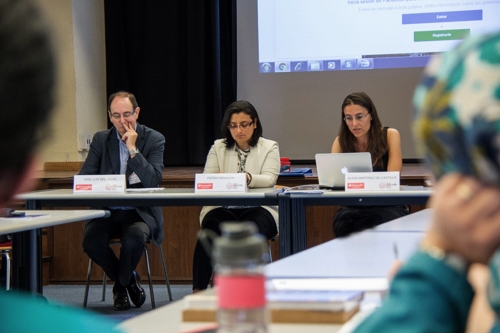
The Centre for the Study of Islamic Manuscripts at Al-Furqān Islamic Heritage Foundation, in co-operation with Fundación General de la Universidad Complutense de Madrid, organised the fourth training course on codicology, titled “Arabic Codicology: The Islamic Manuscript Heritage in the El Escorial Collection”. The course took place from the 3rd to the 7th of July 2017, at San Lorenzo de El Escorial (situated 45km north-west of the capital Madrid, Spain), within the framework of the Complutense University Summer Courses.
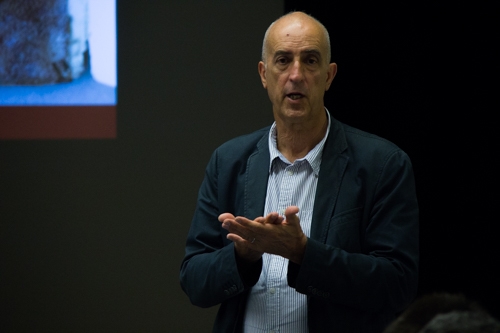
The Course was attended by 16 selected delegates, coming from different countries (including Algeria, Belgium, France, Germany, Italy, Jordan, Malaysia, Netherlands, Estonia, Syria, the United Kingdom, the United States of America and Columbia), and specialised in various subject areas, involving research on Islamic manuscripts. The attendees were PhD candidates within the subject area of the Course, however the Course also included research fellows, lecturers of both Arabic and Persian, assistant professors and two master students.
This year, the Course was taught by Professor François Déroche and Professor Nuria Martínez-de-Castilla-Muñoz (also Director of the Course). The Course was structured in theoretical and practical sessions. The theoretical sessions provided an overall introduction to the science of codicology of Islamic Manuscripts, with particular focus on the basic elements of a manuscript, including the material of the codex (whether paper, parchment or papyrus), the type of binding, the foliation and quires of the codex, as well as the types of script and the main elements of the paratext, including the title page, the colophon and the documentary notes.
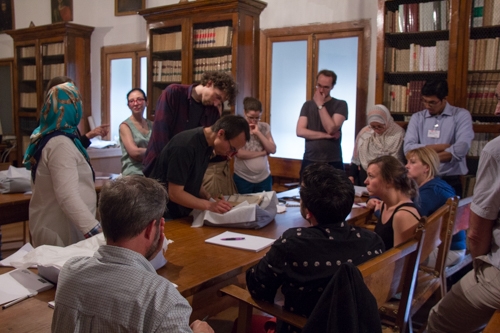
The practical sessions consisted of analysing and describing selected Arabic manuscripts found in the collection of the Royal Library of San Lorenzo Monastery in El Escorial, one of the most important collections of Arabic manuscripts in Europe, and the largest in Spain. Participants were given the chance to work in groups both in theoretical and practical sessions. During the practical sessions students had the opportunity for hands on sessions working with manuscripts to analyse and practice what was discussed and presented in the theoretical sessions. This included: understanding the codex composition, looking at manuscripts writing surfaces, both in parchment and paper, distinguishing between western and non-western paper, etc. The sessions also covered inks and lay-out of manuscripts, with examples in both practical and theoretical session. Arabic palaeography was also a topic that was discussed at length, including Arabic bindings and bookbinders at work. The Course was closed with a session on the history of manuscripts.
The Course started on Monday morning, 3rd July 2017, with the welcoming words of the Course Director, Professor Nuria Martínez-de-Castilla-Muñoz, the Course Co-ordinator, Mr Carlos Leo Roca, and the representative of Al-Furqān Islamic Heritage Foundation, Ms Karima Benaicha, Head of the Library and Online Database Department, who thanked the participants and gave them a brief introduction on the Foundation’s main projects and activities.
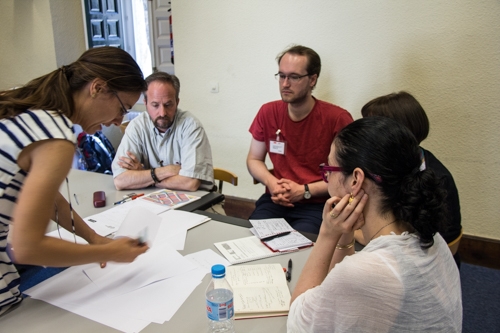
The first lecture was delivered by Professor Nuria Martínez-de-Castilla-Muñoz, who introduced the history of the Arabic manuscript collection at the Royal Library of San Lorenzo Monastery in El Escorial. This was followed by general remarks on the whole collection of manuscripts at the Royal Library, by the Director of the Library, Mr José Luis del Valle Merino. Professor François Déroche then continued with a lecture on writing surfaces (parchment and paper). The first day ended with a presentation titled “Al-Furqan Digital Library Portal: World Islamic manuscript collections, catalogues and written heritage resources”, delivered by Ms Karima Benaicha.
The Course took place at the Public Library of San Lorenzo, while the hand-on sessions were in the El Escorial Library. The attendees were also invited to a visit of the El Escorial Royal Monastery of San Lorenzo de El Escorial, construction of which began in 1563 and ended in 1584. The Monastery (a Hieronymite monastery) was initiated by King Philip II, who wanted a building to serve the multiple purposes of a burial place for his father, Holy Roman Emperor Charles V. There was also a visit to the El Escorial’s Library hall, which was built in 1592, and is also known for its interior, decorated by many notable Spanish and Italian artists of the 16th and 17th centuries.
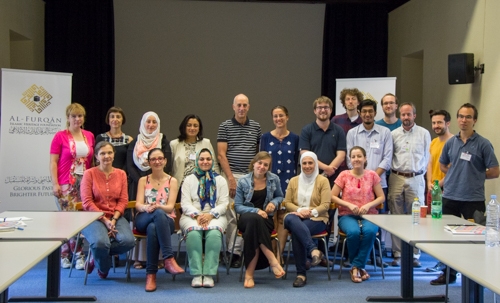
The Course ended on Friday 7th July, with the delivery of certificates to the participants. It was concluded with speeches by Professor Nuria Martínez-de-Castilla and Ms Karima Benaicha, who thanked the attendees for their active participation in the Course as well as for the exchange of their experiences, as researchers of the Islamic written heritage.

